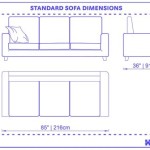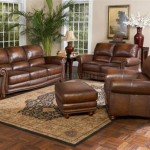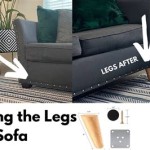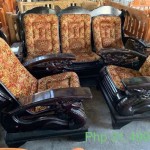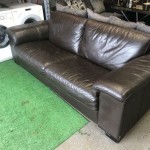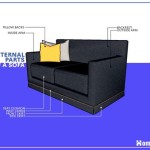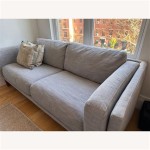How Many Yards Of Fabric Do I Need For A Sofa?
Determining the precise amount of fabric required for a sofa upholstery project is a crucial step in ensuring a successful outcome. Inadequate fabric can lead to delays, necessitate piecing together sections in undesirable ways, or force a complete change of plans. Conversely, purchasing excessive fabric can result in wasted resources and increased project costs. This article will provide a comprehensive guide to calculating fabric needs for a sofa, taking into account various factors that influence the total yardage.
The calculation process is not a one-size-fits-all equation. It’s influenced by the sofa's dimensions, style, the fabric’s pattern and width, and even the experience level of the upholsterer. Therefore, a thorough assessment of these variables is essential before making any fabric purchases. Missing even one detail can significantly skew the final estimate.
Accurate measurement is the bedrock of an effective calculation. This involves meticulously measuring all the dimensions of the sofa including its length, width, and height. The arms, back, and cushions should be treated as individual sections, with each receiving its own set of detailed measurements. These measurements will subsequently be used to determine the surface area that needs to be covered in fabric.
Beyond simple measurements, it's important to map out the different sections of the sofa. This visualization will aid in understanding fabric placement and cutting strategies. A sketch, even a rudimentary one, can be invaluable in this process. It helps to identify potential areas that may require extra fabric, such as curved sections or areas with complex detailing. This proactive planning will minimize the risk of underestimating fabric needs.
Key Point 1: Understanding Sofa Dimensions and Styles
The size and style of the sofa are primary determinants of how much fabric is required. Larger sofas naturally demand more fabric than smaller ones. A simple, rectangular sofa will typically require less fabric compared to a sofa with intricate detailing, such as rolled arms, tufted backs, or skirts.
Different sofa styles also necessitate different cutting strategies. For example, a Lawson sofa, characterized by its clean lines and simple design, might allow for more efficient fabric utilization. Conversely, a Chesterfield sofa, with its deep button tufting and rolled arms, will require more fabric to accommodate the complex curves and detailing.
Consider the cushions carefully. Loose cushions, whether back or seat cushions, will each require fabric for both sides and the boxing (the strip of fabric around the edge). Attached cushions, while seemingly simpler, still require careful measurement to account for the fabric that wraps around the frame.
The dimensions of each section should be recorded separately. Measure the length, width, and height of the back, the arms, the seat, and any special features like skirts or welting. Add a few inches to each measurement as a seam allowance. These allowances provide room for error during cutting and sewing and prevent the fabric from becoming too tight during the upholstery process.
Here's a general guideline based on sofa size, but it is crucial to remember that these are estimates. It is always better to err on the side of caution and purchase slightly more fabric than you think you need. *
Loveseat (2-seater):
Typically requires 8-12 yards of fabric. *Standard Sofa (3-seater):
Typically requires 12-16 yards of fabric. *Large Sofa (4+ seater or sectional):
Typically requires 16-20+ yards of fabric.Key Point 2: Fabric Width, Pattern Repeat, and Nap
Fabric characteristics play a significant role in determining the total fabric yardage. Three key elements need to be taken into consideration: fabric width, pattern repeat, and nap (or direction). Neglecting any of these factors can lead to incorrect calculations and potential shortages.
Fabric width is the measurement from selvage (the finished edge) to selvage. Most upholstery fabrics come in widths of 54 inches, although narrower widths are also available. When calculating fabric needs, consider the fabric width relative to the dimensions of the sofa sections. Wider fabrics can often be used more efficiently, reducing the need for multiple seams and potentially minimizing waste.
Pattern repeat refers to the vertical and horizontal distance between identical elements in a patterned fabric. Fabrics with large pattern repeats require more fabric than solid or small-patterned fabrics because it is necessary to match the pattern across different sections of the sofa. This matching process inevitably creates waste material. Measure the pattern repeat meticulously and allocate additional fabric accordingly. Failure to do so will result in a mismatched or asymmetrical appearance.
Nap refers to the direction in which the fibers of a fabric lie. Fabrics with a nap, such as velvet, corduroy, or some types of microfiber, appear different depending on the viewing angle. When working with napped fabrics, all pieces must be cut in the same direction to ensure a consistent appearance. This requires careful planning and layout, often increasing the amount of fabric needed. Pay close attention to the nap direction marked on the fabric and follow it scrupulously; otherwise, the completed sofa will have visible variations in color and texture.
To accurately account for pattern repeat, consider laying out the fabric on a flat surface and measuring the distance between the repeating elements. Then, factor this distance into the cutting plan, ensuring that the pattern aligns seamlessly across all visible sections of the sofa. For napped fabrics, mark the nap direction clearly on the back of the fabric before cutting to avoid confusion and ensure consistent orientation.
Key Point 3: Accounting for Upholstery Complexity and Waste
The complexity of the upholstery project and the potential for waste are often underestimated, leading to inaccurate fabric estimates. Intricate designs, curved sections, and the presence of welting or piping can all significantly increase fabric consumption. Similarly, the experience level of the upholsterer and the cutting efficiency can contribute to material waste.
Sofas with complex curves, such as rolled arms or waterfall skirts, require more fabric than those with straight lines. These curves need to be carefully shaped and fitted, often resulting in irregular fabric cuts and increased waste. Add extra fabric allowances to account for these complexities. Experienced upholsterers often develop techniques to minimize waste, but even they need to account for the inherent challenges of working with curved surfaces.
Welting and piping are decorative trims that add a finished look to the sofa. These trims require fabric strips that are cut on the bias (at a 45-degree angle to the grain) to allow them to curve smoothly around the edges of the sofa. Cutting fabric on the bias generates a significant amount of waste, so it is essential to calculate the total length of welting required and add sufficient fabric accordingly. As a guideline, add approximately 1-2 yards of fabric for every 10 feet of welting.
Additionally, factor in seam allowances, which provide room for error during cutting and sewing. Standard seam allowances are typically ½ inch, but it may be advisable to increase this allowance for thicker fabrics or more complex seams. Also, mistakes happen. Budgeting for "oops" fabric can save frustration. A cushion cover sewn incorrectly, for example, could mean re-cutting and resewing to achieve the proper fit. Having extra fabric to cover those unexpected errors prevents delays and keeps the project on track.
The experience level of the upholsterer is also a factor. Beginners may be less efficient at cutting and using fabric, potentially leading to higher waste. If you are attempting the upholstery project yourself and lack experience, it is wise to purchase extra fabric to compensate for potential errors. Consult with an experienced upholsterer or seek guidance from online tutorials to improve cutting techniques and minimize waste.
Consider purchasing extra fabric - often referred to as "insurance fabric." Adding an additional yard or two to the total estimate can save considerable grief if mistakes occur or unexpected issues arise. This extra fabric can also be used for future repairs or to create matching throw pillows.
In addition to the above considerations, it is also good practice to thoroughly inspect the fabric for flaws before cutting. Check for any imperfections, such as dye lot variations, snags, or printing errors. If any flaws are found, contact the fabric supplier to arrange for a replacement or discuss adjustments to the cutting plan. Identifying these issues early can prevent costly mistakes and ensure a high-quality finished product.
By meticulously considering the sofa's dimensions and style, fabric characteristics (width, pattern repeat, nap), upholstery complexity, and potential waste, a more accurate estimate of total fabric yardage can be achieved. Remember, thorough planning and careful measurement are critical for a successful sofa upholstery project.

Upholstery Yardage Chart Chairs Couches Sofas

Reupholstery Yardage Charts Leather Hide

How Much Fabric Do You Need For Reupholstering All Things Thrifty

Yardage Chart For New York Upholstery Re Custom Slipcovers And More Bettertex Interiors

Sofa Fabric Estimator

How Much Upholstery Fabric Do I Need For A Couch Revolution Fabrics

Lifestyle How Many Yards Of Fabric Do I Need Your Design Partner Llc

How To Measure A Sectional

How Much Upholstery Fabric Do I Need

Reupholstery Yardage Charts Leather Hide

